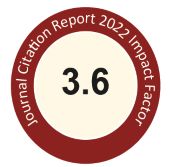Abstract
Turmeric (Curcuma longa L.) is a medicinal plant used extensively in Chinese and Indian traditional medicine as a home remedy for various diseases. It has been used for medical purposes for centuries. Today, turmeric has become one of the most popular medicinal herbs, spices, and functional supplements worldwide. Curcuminoids are linear diarylheptanoids from the rhizomes that include curcumin and two related compounds: demethoxycurcumin and bisdemethoxycurcumin, which are the active components of the C. longa plant, play a crucial role in numerous functions. This review summarises the composition of turmeric and the properties of curcumin regarding its antioxidant, anti-inflammatory, anti-diabetic, anti-colorectal cancer, and other physiological activity. In addition, the dilemma of the application of curcumin due to its low water solubility and bioavailability was discussed. Finally, this article provides three novel application strategies based on previous studies: using curcumin analogues and related substances, gut microbiota regulation, and using curcumin-loaded exosome vesicles and turmeric-derived exosome-like vesicles to overcome application limitations.
Recommended Citation
Hsu, Kai-Yu; Ho, Chi-Tang; and Pan, Min-Hsiung
(2023)
"The therapeutic potential of curcumin and its related substances in turmeric: From raw material selection to application strategies,"
Journal of Food and Drug Analysis: Vol. 31
:
Iss.
2
, Article 1.
Available at: https://doi.org/10.38212/2224-6614.3454
Creative Commons License

This work is licensed under a Creative Commons Attribution-Noncommercial-No Derivative Works 4.0 License.
Included in
Food Science Commons, Medicinal Chemistry and Pharmaceutics Commons, Pharmacology Commons, Toxicology Commons


Abstract Image